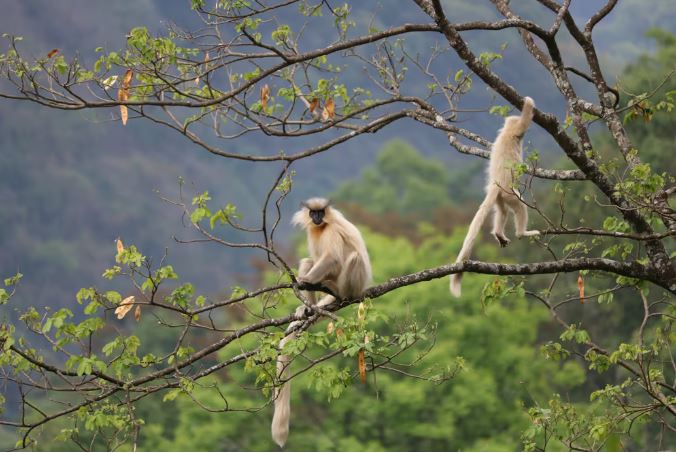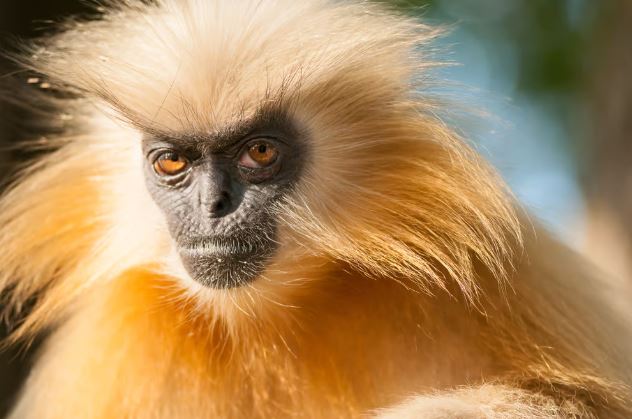The elusive golden langur have a limited distribution in India and Bhutan and they’re extremely shy and avoid humans when possible.
It’s estimated that there are no more than 7,000 mature golden langurs living in the wild today.
Golden langurs (Trachypithecus geei) belong to the Primates order and the suborder Haplorhini. They’re also formally called gee’s golden langur.
Golden langurs are classified as Old World monkeys, or the family Cercopithecidae.
Due to their elusiveness, golden langurs have been placed under different genuses in the past.
They now belong to the genus Trachypithecus. This category of monkeys includes lutungs, langurs, and leaf monkeys mainly found in Southeast Asia.
It was determined in a 2003 study that golden langurs have a subspecies. The scientific name for the species is Trachypithecus geei bhutanesis.
Mature adults have golden orange fur. It can lighten or darken with the seasons.
Baby langurs are born with white fur. As they mature into adults, they develop a darker golden fur color.
Golden langurs are considered fairly small primates. The average weight of a mature adult is between 19 and 26 pounds (8.6-11.8 kg). The length of their body, not including the tail, is about 35-37 inches (89-94 cm).
Golden langurs have long limbs and tails. Males usually have a slightly longer tail than females. Females have an average tail length of 34 inches (86.3 cm).
Males have an average tail length of 38 inches (96.5 cm). Their tails are usually longer than their entire body length.

Golden langurs live at a wider range of elevations than many other primates. Populations can be found at sea level or as high as 9,843 ft (3,000 m) above sea level.
They can also live in lowland evergreen and semi-evergreen forests and savannas.
Golden langurs have unique stomachs with multiple chambers. This helps break down the fibrous leaves so they get the most nutrients out of them. Due to their multi-chamber stomachs, golden langurs spend a lot of time resting to digest.
Golden langurs are very secretive creatures. They don’t like humans to get too close. Usually when encountered by humans, they flee the area.
This makes it very difficult to study them. Further studies are needed to fully understand golden langur behaviors and habits.
It’s even hard for researchers to study their natural behaviors. Golden langurs make it aware that they’re being observed.
Golden langurs live in groups. Some groups may have less than 10 members. Other groups have as many as 50 individuals.
Most groups have one dominant male and the rest are female. Larger groups may have two males, but there is still only one dominant male.








